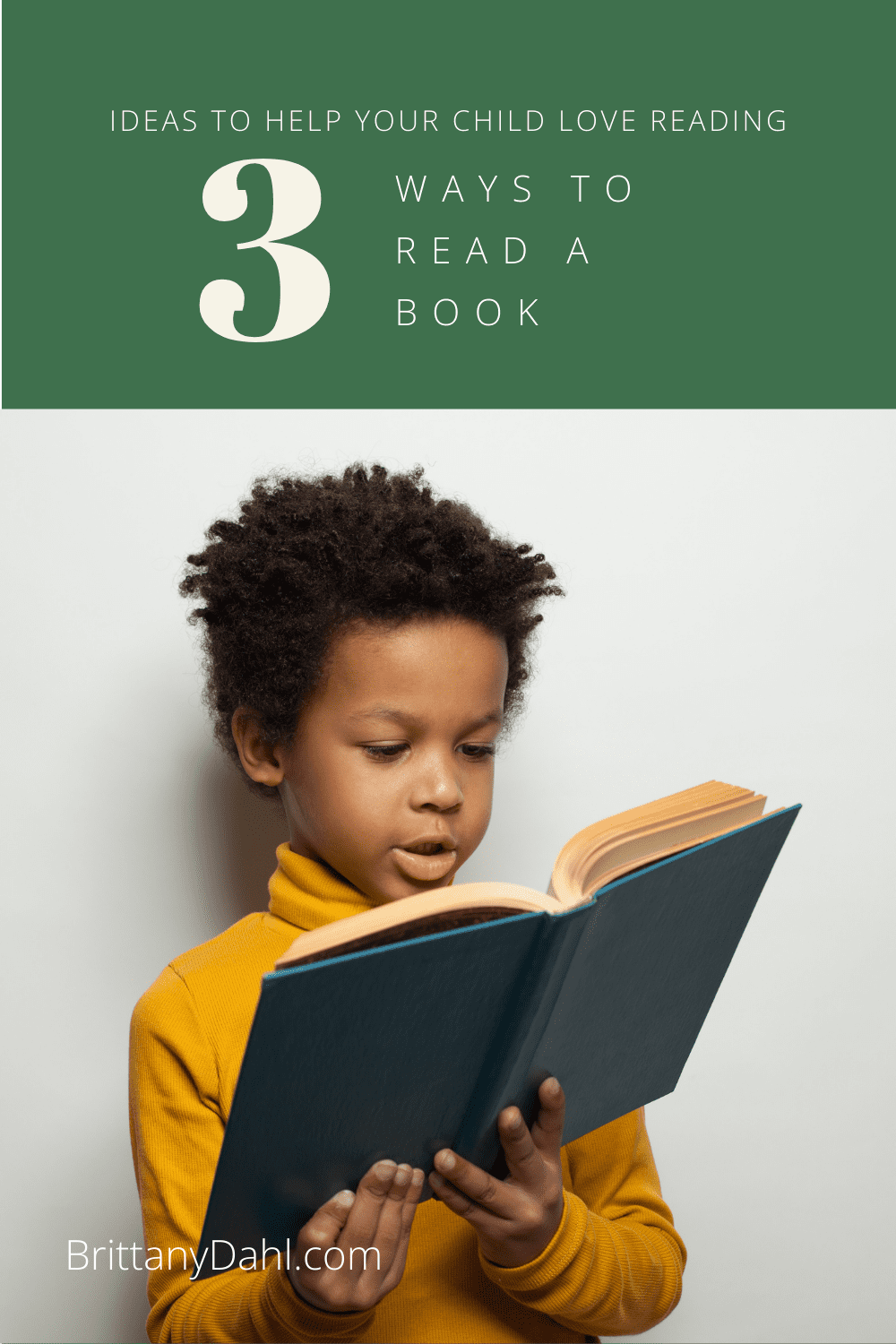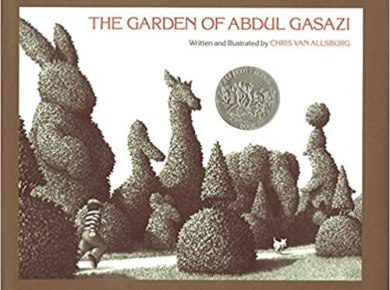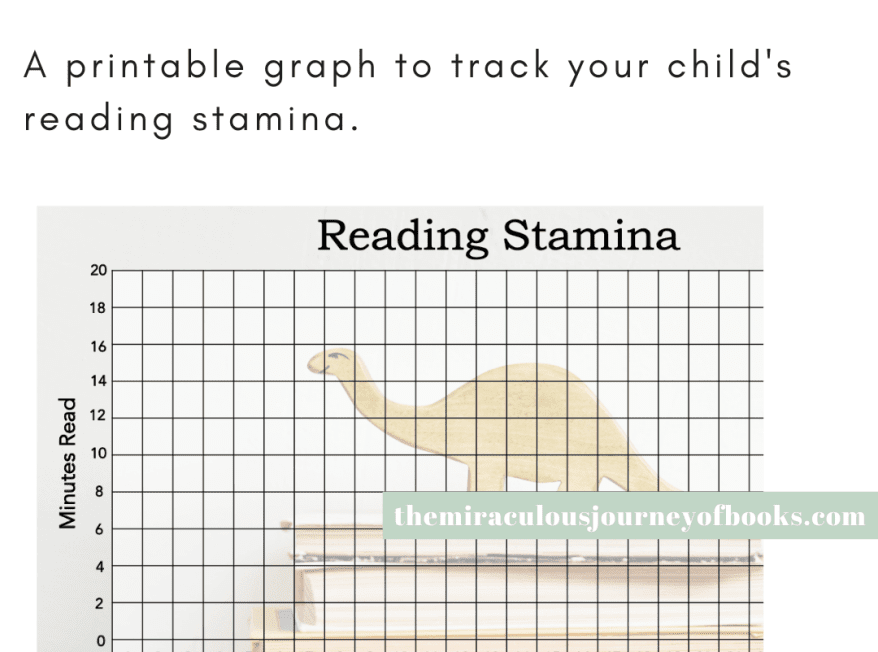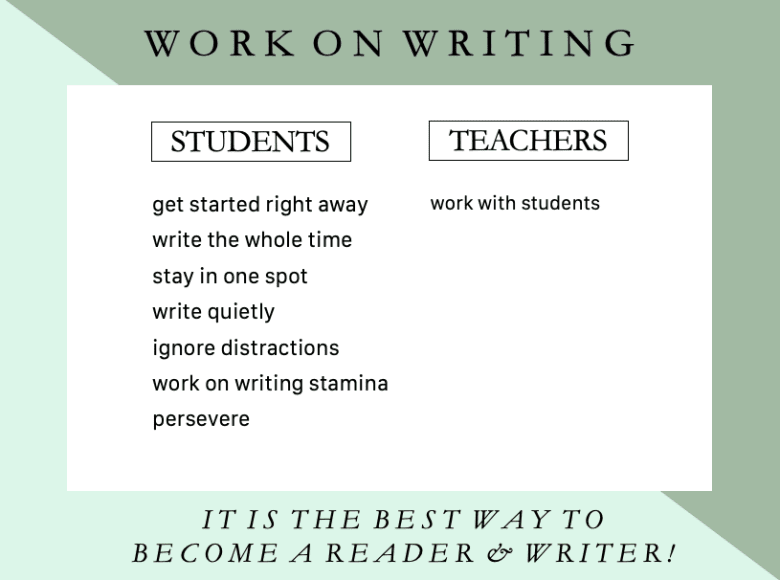The biggest secret to teaching your child to read without losing focus is to practice. But giving them the right tools to use while they practice requires some effort! After reading this post, you will learn how to guide your child to use one of the three ways to read a book in order to improve their reading stamina in one month.
For the last six years I have happily incorporated The Daily 5 framework in my classroom. Now that I have practiced it with my students, I look forward to the day I can implement this reading approach at home with my child. One of the foundational strategies is understanding the three ways to read a book: read the pictures, read the text, and reread (or retell) the book.
In the beginning of each school year I do a lesson that introduces the three ways to read a book, and I would like to share this simple plan with you! It has been an excellent way to create a classroom culture that encourages reading. I feel confident that this method can also help to solidify the importance of reading at home, too.
*We use affiliate links to share products with you. If you use the link to make a purchase, the cost of the book doesn’t go up for you. However, we will receive a commission and we do appreciate your support.
Three Ways to Read a Book Lesson
Gail Boushey from The Daily Cafe has created a series of videos to walk kids through the methods of the three different ways to read a book. These videos were made after families were forced to stay home during the pandemic. (Thank you, Coronavirus for the great resources that are being made available!) There are eight videos that each include a lesson and then an example of Gail modeling good reading practices.
In Gail’s second video on the Daily 5 website, you will learn how she teaches the three different ways that we read. I’ll also explain them in detail in this article. It’s important to practice each of these methods in order to become a good reader who can read without losing focus.
As a teacher, this model and practice is exactly what I do with my students in the classroom, and it’s what you can do to implement this strategy with your kids at home.
To begin, I tell students that there are three different ways that we read a book. Then, I have them discuss what they do when they read a book. I get some very creative ideas and this question always sparks an interesting conversation. This is a great exercise to get them to reflect on what it is they actually do while reading. Try this with your kids!
Read the Pictures
After our brainstorming session of what they think the three ways to read a book might be, I introduce students to the first method: read the pictures. When I tell this to them, especially my fifth graders, they look at me a little strangely. The majority of these students are confident readers and rarely give the pictures a second look. So, I explain and model this idea a little further for them.
What is Picture Reading?
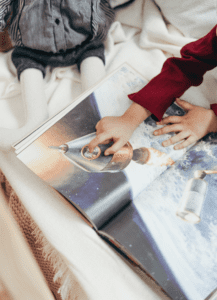
Discussions are sparked as kids share their ideas and talk about how they might differ from someone else’s idea. They point out specific details in the illustrations in order to support their answers, which is one of the best practices for presenting an argument.
Be sure you don’t overlook this important way to read! It’s easy to miss part of the story if you don’t spend time “reading” the pictures.
It’s also important to note that this simple lesson covers a very important learning standard in many states. The majority of states’ curriculum standards include the idea of carefully analyzing visual elements. This is also true of the Common Core Standards.
The images in books add to the meaning, tone, and beauty of the text and it’s critical for kids to take the time to make that connection. Honestly, that’s the key: you have to slow down and look carefully. Most of us are in too much of a hurry to get through the words that we don’t slow down to see how the pictures add to the story.
Reading the Pictures with Beginning Readers
I want to add that this is an extremely important skill for your younger, or beginning, readers. Illustrations help kids to make sense of what they are reading. Sometimes the pictures will help to give them a clue to an unknown word. It can also help them follow the events and even analyze the story as a whole.
For babies and toddlers, the pictures are the only thing that they focus on while you read to them. In fact, until kids begin to learn how to read, it’s not necessary for you to track the words with your finger as you read aloud to them. Simply let them observe the pictures as they listen.
Recommended Books to Help Model the Read the Pictures Strategy
Choosing a book to model for this skill can sometimes be a little tricky, and you might want to have more than one option on hand in case someone in a classroom setting says they’ve read it. In the past few years I have gone for Chris Van Allsburg’s book The Garden of Abdul Gasazi. This is a great choice because, like many of Van Allsburg’s books (The Polar Express and Jumanji), you will miss some of the story if you are not paying close attention to the details in the illustrations. Most of his books are appropriate for kids who are fourth grade or older.
Another great author to use for this method, and appropriate for any age, is David Wiesner. His books are masterful and the majority of them do not use any text at all. They tell beautiful stories of adventure and creativity. Your kids will have a great time reading the pictures using one of his books! Two of my favorites are Tuesday and Flotsam.
However, if you don’t have either of these authors on your bookshelf, this strategy can be done with any picture book! Keep in mind that it’s going to be helpful to choose something that they haven’t read previously so they can make predictions. If they already know the story, it will defeat the purpose.
Read the Words
The second way to read a book is the one students typically think of when it comes to reading. It’s to read the words! Obviously, this method is where you will gain the best understanding of the story.
If you have chosen to read a picture book that included text for the first method (read the pictures), it is enjoyable to now go back and read the words to see if your observation skills were on par. In my experience, students often get very excited if they guessed the details correctly based on the clues they saw in the pictures.
However, it’s also important for them to see that sometimes their guesses of the illustration’s meaning is different from what the text explains. This could lead to a meaningful discussion about how the words and the pictures support one another; sometimes the story needs both parts to make it complete.
Recommended Books to Help Model the Read the Words Strategy
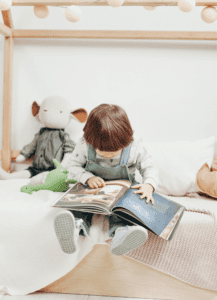
When choosing a text, I typically stick with one of Chris Van Allsburg‘s books. Since I use his story for modeling the pictures, it’s helpful to use the same book. Kids like to see if they guessed the story correctly based solely on the illustrations. The chances that they guess his written narrative is very slim, and they are always surprised by his creative endings!
Reread or Retell the Story
The final way to read is to reread or retell the story. This is often pretty easy when you have a good book on hand. For kids who are beginning to learn how to read, I emphasize retelling the story because this is something they can feel more confident about doing. For more confident readers, I encourage them to reread, but they may choose to do either method.
Both of these types of reading, while very similar, have some differences. The thing I like best is that either way helps to improve a child’s comprehension abilities.
What Does it Mean to Reread a Story?
To reread a text means to read it again. Students have the hardest time with this strategy because it takes a while and they are not always willing to devote the time to it. Many kids will often just skim the text and some of them will just idly flip the pages and stare blankly at the words when asked to do this.
Rereading Improves Comprehension
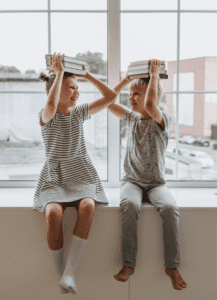
Once you have modeled this a few times during different lessons in class, they begin to see the benefit. There are always little “ah-ha” moments when kids realize something they didn’t understand the first time they read a text. It’s especially neat to do this in a classroom because they begin to encourage one another to reread. After some practice, I start to hear things like, “Oh! I didn’t see that the first time we read it,” or, “Now I get it!”
Rereading Improves Fluency
Another reason to reread the text is because it can help children to become more fluent with their reading. This allows them to grow beyond the choppy sound that comes from reading word-by-word. After rereading a passage or story several times they are able to read more smoothly. This will, in turn, help them to build their confidence as a reader.
What Does it Mean to Retell a Story?
To retell a story is a little different than rereading it. Retelling means that you flip back through the text and tell the story again based on what you recall. Flipping back through the book and using the pictures as a guide is a good way to do this.
Retelling includes sharing lots of details. This differs from a summary of the story because summaries are much more succinct. They only include the most important details from the story.
Independent readers can practice retelling the story by repeating the story to themselves in their head. Or, if you are reading with your child, they can tell the story aloud.
So, for my students who dislike being asked to reread, retelling will help them to feel more confident as a reader. In fact, going back through the book and “reading the pictures” as a way to guide kids in telling the story will help to reinforce the events in their mind; it improves their comprehension.
Rereading and Retelling Makes You a Better Person
Finally, I would also say that both retelling and rereading a story helps to cultivate a bond between yourself and the characters. Take a few minutes to read our article on Can Reading Make You a Better Person? for more information on this idea.
Recommended Books to Help Model the Rereading and Retelling Strategy

If your child is practicing retelling, they should use a picture book that includes text they have previously read. The pictures will help to remind them of the events as they retell (giving as many details as they can) what happened on each page.
The Garden of Abdul Gasazi is great for rereading and retelling because you can reread the text, or use the pictures to guide in a retelling of the story.
Building Reading Stamina While Using One of the Three Ways to Read a Book
The three ways to read a book concept centers around encouraging a child to increase their reading stamina.
What is Reading Stamina?
This is the length of time someone is able to focus on a book without distraction.
Having the ability to read without losing focus takes practice for everyone! There has not been a single year where my students have read for more than two minutes the first time we practiced this as a class. I inevitably had one child (usually more) in the group who lost focus. It was incredible to see the change they could make in just a few short weeks of continued practice!
How Can I Improve Reading Stamina?
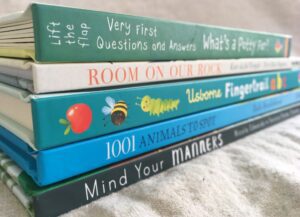
Once everyone is cozy, I set a stopwatch to record how long the group can read without losing focus. I am reading my own book, but I’m also making a point to look around to see when someone stops reading. Once that happens, I pause the stopwatch and have the students gather together in our meeting area.
They want to know why we stopped, but I make it a point not to tell them who lost focus. The child knows who they are, and I emphasize that we are all practicing this very difficult skill. I share their time with them, charting it in a graph, and we review read to self expectations. Then, we practice again!
This practice goes on for a couple of weeks until we are able to read for a sustained twenty minutes. Every child is so proud of this accomplishment! And they should be! It’s not easy.
Three Ways to Read a Book Stamina Graph Tracker
As my students practice their reading stamina each day, we track their progress using a graph. This is also an incredible visual for your own children to use at home. You can print this out and hang it on your refrigerator. Or, I save this electronic version on my computer and update it after each practice with my students. Our goal is for them to read without losing focus for twenty minutes. This is attainable for any child who is an independent reader.
Three Ways to Read a Book Anchor Chart
If you are using this as a teacher, it is helpful to create an anchor chart that is displayed all year long so you can review expectations with students each time they practice independent reading. We have designed some posters that you can easily print and use in your classroom with your students. There are anchor charts that are already completed, or a blank chart available that you can fill out as you brainstorm and discuss expectations with your students as a group.
Model Three Ways to Read a Book
One of the most important things you can do for your children is to model reading for them. When my students are practicing building their stamina, I do the same thing right along with them. Even now, as a mom, I am intentional about having my son catch me reading a book. A model is the best way to reinforce the importance of reading, as well as what good reading looks like.
Also, for those of you in a classroom, before you practice building stamina with students, ask two of them to show the class what this strategy would look like if they were doing it independently. In other words, have them model a positive example of following the expectations for independent reading. They can sit in front of the classroom so the other students can observe this example. Then, what they are always eager to do, is to model a negative example. This is important because, not only are they having fun, this negative model reinforces what should NOT be happening while they are practicing building their stamina.
Reading Resources for Three Ways to Read a Book
In my classroom, we access books in many different ways. Students can listen to audio books, they can read with a partner, or they can read independently. Each of these have different benefits. The first two specifically helping to build fluency.
Listening to reading, reading to someone, and reading to yourself each offer the opportunity for kids to take in a story. They can use their choice of how to read to help guide them in one of the three ways of reading: read the pictures, read the words, or reread the story.
There is much more helpful information in The Daily 5 book written by Gail Boushey and Joan Moser. I would highly recommend getting the book and reading it in detail for yourself. For teachers, there is even a plan to introduce the other four Daily 5 activities to your students. It includes excellent lessons, models, and a schedule for the first couple of weeks of school. I have used this each year and it has helped immensely for establishing a thriving reading culture in my classroom.
Now you are equipped to guide your child to use one of the three ways of reading with sustained focus by practicing reading stamina for one month. Download our graph trackers to record your child’s progress as they practice reading independently. Also, if you are a classroom teacher, check out our anchor charts that display the Daily 5 expectations for students. It’s a great way to help remind them of how to practice being a good reader.
Related Posts
Help Your Child Choose a Suitable Book to Read: Help your child choose a suitable book to read independently. This is a task that takes practice. Use these ideas to guide them!
Read Books in a Series: When kids read a book series, they will fall in love with books. Learn about the 4 reasons why and find lists with our favorite series!

